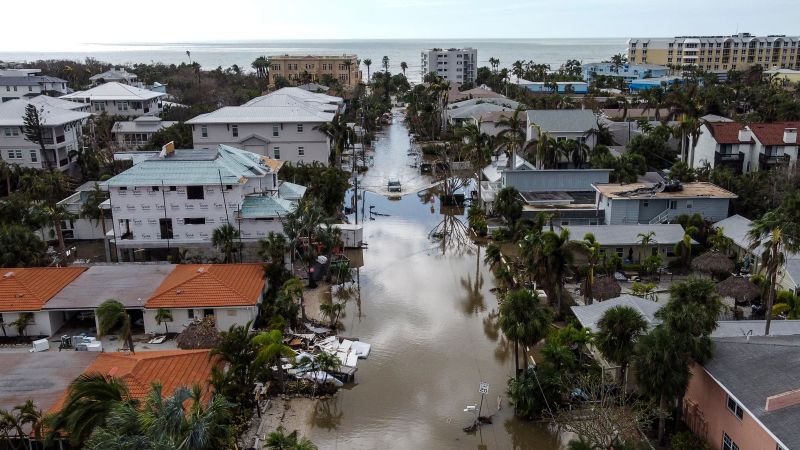Losses from Hurricane Milton could reach as high as $34 billion, according to an early estimate of both flood and wind damage from research firm CoreLogic, with between $4 billion to $6 billion of those losses being uninsured flood damage.
And that is only an estimate of losses caused directly by the hurricane itself, and it doesn’t include any damage from at least nine tornados that accompanied the storm. The storm is believed to be responsible for at least 24 deaths across Florida. Still, despite the destruction and tens of billions of losses, the damage could have been worse, according to the early estimate.
Most homeowner policies do not cover damage from flooding, only damage caused by the high winds of a storm. Most insured flood damage is covered by the National Flood Insurance Program (NFIP), run by the Federal Emergency Management Agency. Homeowners who live in areas at high risk of flooding are often required by their mortgage lender to have flood insurance. But much of the flood damage can occur outside of those designated areas, where homeowners are far less likely to have coverage.
Most of Milton’s losses came from wind damage due to the unusual nature of the storm, according to CoreLogic.
“As Hurricane Milton neared landfall, it interacted with the jet stream over the southeastern United States, causing the winds on the northern and northwestern sides of the hurricane – generally known to be weaker – to be atypically strong,” said Daniel Betten, director of forensic meteorology at CoreLogic, in the report. “To add to the complexity, weather gauges in coastal Florida also measured hurricane force winds over Sarasota south of where Milton made landfall, essentially creating two distinct lanes of damaging, hurricane-force winds.”
Nevertheless, there was less wind damage than expected given the strength of the winds, and very little storm surge flood damage, especially in the population centers of the Tampa Bay area, according to CoreLogic’s analysis, which was completed after it examined the storm damage firsthand.
“Given the large concentration of property in the Tampa Bay area, including older residential and high-value commercial structures, (larger) insured losses were possible,” said Tom Larsen, associate vice president hazard and risk management at CoreLogic, in the report.
The Milton losses will likely total far below CoreLogic’s estimated losses of up to $47.5 billion from Hurricane Helene, which came only two weeks before Milton. But it could still make Milton one of the 10 costliest hurricanes to ever hit the United States in terms of insured losses, including the losses covered by the NFIP.
The upper end of the insured loss estimate, $22 billion in wind damage and $6 billion in flood damage, would be enough to move Milton into the 10th biggest hit to insurers, residents and businesses from a storm, just ahead of the 2008’s Hurricane Ike when adjusted for inflation. The Insurance Information Institute, an industry trade group, currently lists Ike as the ninth costliest storm in terms of insured losses, but it will be pushed down to 10th by Helene.
The lower end of the insured losses estimate from CoreLogic would be $17 billion, with $13 billion of wind damage covered by homeowners and business insurance, and $4 billion of insured flood losses.
Still, the fact that Milton so closely followed Hurricane Helene, which also hit parts of the Florida Gulf Coast, makes for a challenging recovery for Floridians and their insurers, said CoreLogic’s report. And the insurance market in Florida is already in trouble, with an exodus of national insurance companies from the market, combined with numerous local private insurers facing financial problems.
Homeowners’ insurance premiums in Florida were already far higher than in other states, and Citizens Property Insurance Corp., the state-backed nonprofit home insurance company set up to be an insurer of last resort, had 1.3 million homeowners policies and would itself be insolvent were it a private company. Because it is a public entity, it has the power to impose a premium surcharge on all policyholders throughout the state to ensure all claims are paid, if claims exceed its financial reserves. But that will only raise the costs for all insured Florida homeowners and businesses.
Read the full article here


